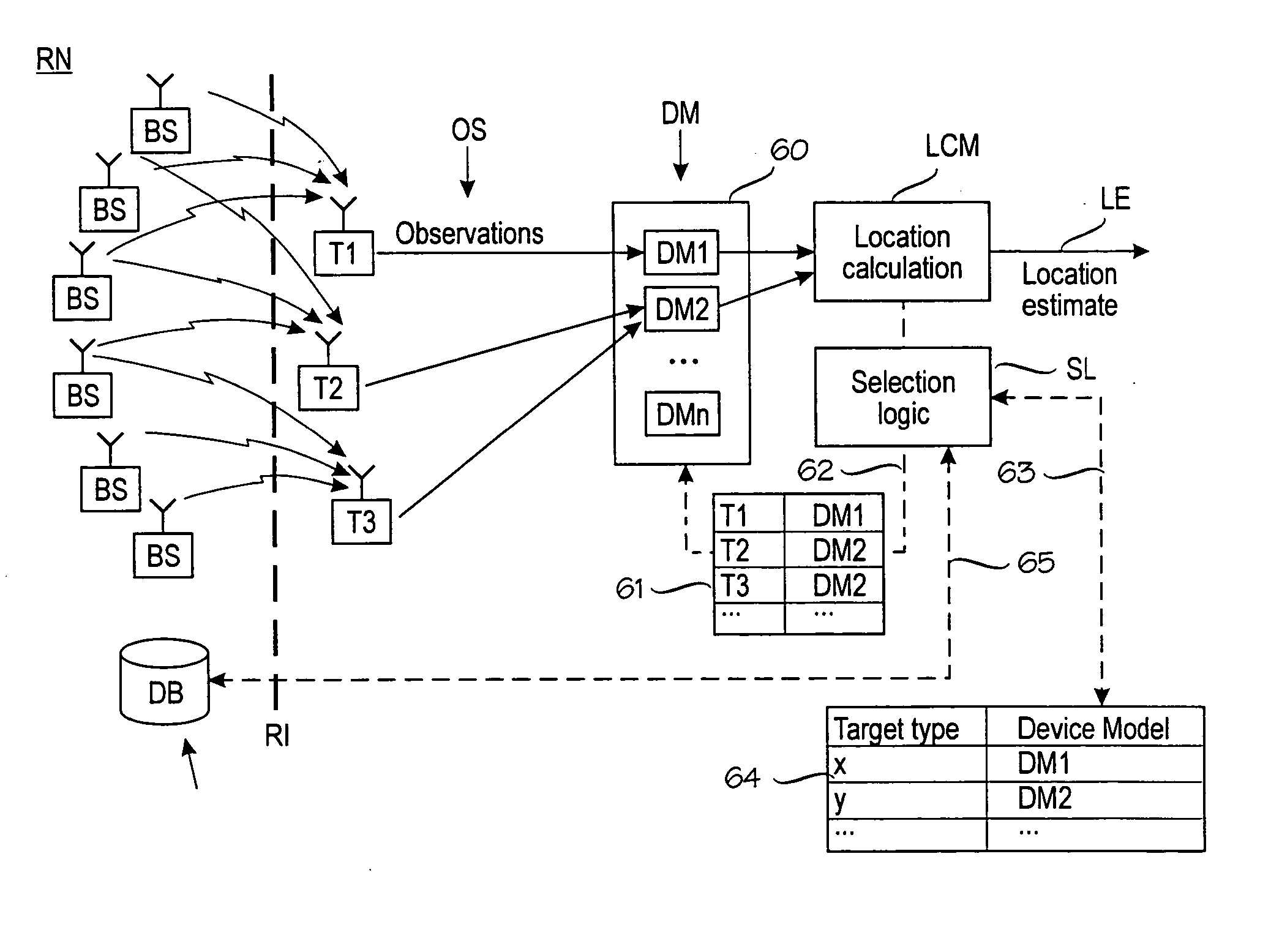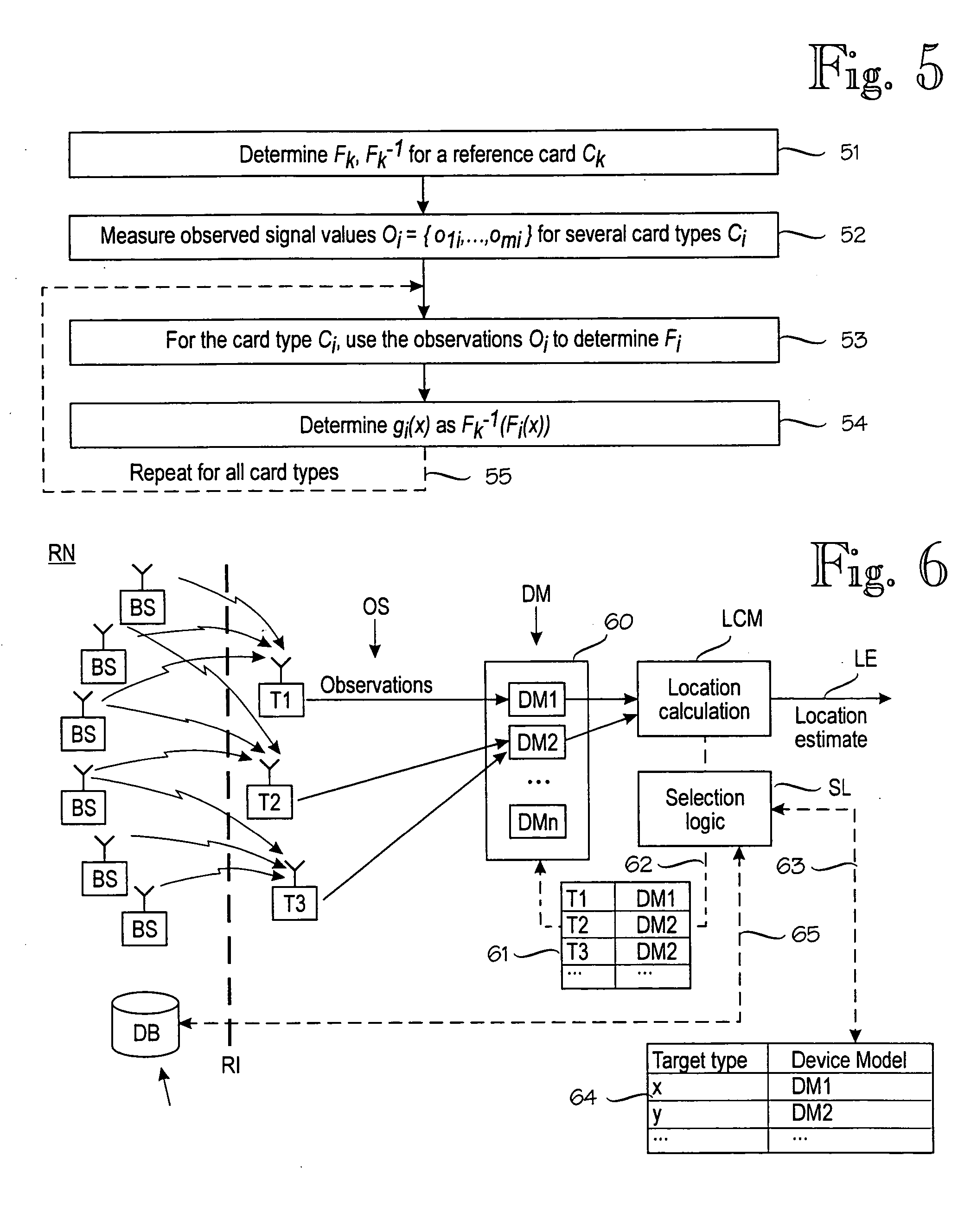Applications of signal quality observations
a signal quality and application technology, applied in the field of practical applications of signal quality observations, can solve the problems of poor signal strength or rssi measurement by many mobile communication devices, inability to accurately measure rssi, and related problems in network planning and/or maintenance, so as to achieve the effect of little or no incentive to measure and a much simpler unit-specific device model
- Summary
- Abstract
- Description
- Claims
- Application Information
AI Technical Summary
Benefits of technology
Problems solved by technology
Method used
Image
Examples
Embodiment Construction
[0028]FIG. 2 is a block diagram of an exemplary location estimation module LEM for estimating the target device's location based on signal values at the radio interface RI. FIG. 2 shows a compact location estimation module LEM, but more distributed embodiments are equally possible. An essential feature of the location estimation module is a probabilistic model PM of the target device's wireless environment, the probabilistic model being able to predict the target device's location given a plurality of observations from the radio interface. In this example, the probabilistic model PM is built and maintained by a model construction module MCM. The model construction module MCM builds and maintains the probabilistic model on the basis of calibration data CD or propagation data PD in the form of one or more propagation models, or any combination thereof. Calibration data CD is the result of physically measuring signal values at known locations (or determining the coordinates of those lo...
PUM
 Login to View More
Login to View More Abstract
Description
Claims
Application Information
 Login to View More
Login to View More - R&D
- Intellectual Property
- Life Sciences
- Materials
- Tech Scout
- Unparalleled Data Quality
- Higher Quality Content
- 60% Fewer Hallucinations
Browse by: Latest US Patents, China's latest patents, Technical Efficacy Thesaurus, Application Domain, Technology Topic, Popular Technical Reports.
© 2025 PatSnap. All rights reserved.Legal|Privacy policy|Modern Slavery Act Transparency Statement|Sitemap|About US| Contact US: help@patsnap.com



